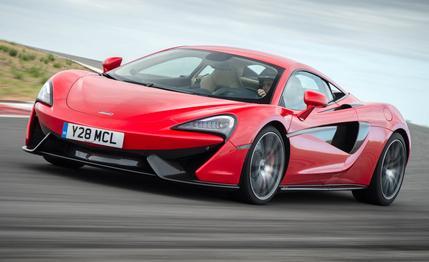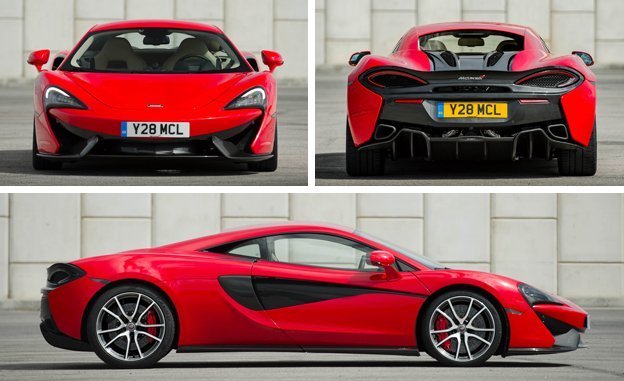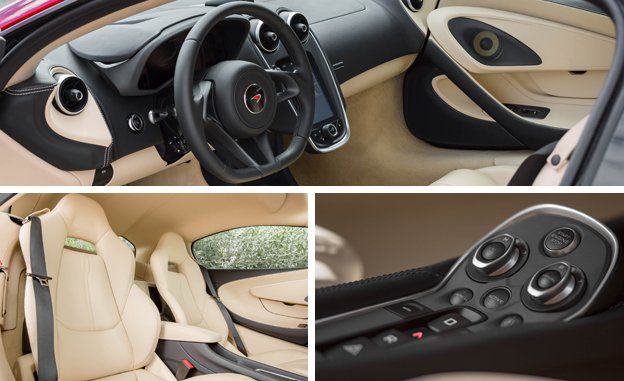 First Drive Review
First Drive Review
Cut the kids’ allowance and halt the 401k contributions. Meat and alcohol are out; your new diet consists of rice, beans, and ketchup packets lifted from the office cafeteria. That extra bedroom can print cash via Airbnb, and your bodily fluids can legally bring at least $200 a month. Who needs cable or an iPhone when you’re living in the moment? You’re going to own a supercar!
Don’t get hung up on the baby McLaren’s $187,400 base price. Like most 570S customers, you only need to concern yourself with 36 monthly lease payments of roughly $2200. That’s not exactly BMW 3-series money, but it’s feasible enough to make us wonder: What if all of life’s little luxuries were traded for one big and fast luxury?
McLaren says that the 570S primarily will be sold—or leased—to folks who own two or three cars, rather than 20 or 30. It’s a car intended more for the street than the track, so it includes niceties such as door pockets, a glove box, and vanity mirrors. An optional front-axle lifter helps clear speed bumps while the electric steering-column adjuster flies in the face of McLaren’s fastidious weight-saving efforts.
The brand’s core DNA is preserved with the carbon-fiber tub, seven-speed dual-clutch automatic transmission, and twin-turbo 3.8-liter V-8 common to the P1 and the 650S. To drive a distinction between its pricier offerings, McLaren emphasizes that the 570S is a sports car, but those dihedral doors don’t lie. This is a starter supercar in the same vein as the Audi R8 and the upcoming Acura NSX.

Of course, sacrifices must be made to price a McLaren like a modest Midwestern home. Most of the 570S’s body panels are fashioned from aluminum rather than carbon fiber, and there are no active aerodynamic tricks. These are reasonable concessions, but it’s too bad that the budget didn’t allow for McLaren’s Proactive Chassis Control, which replaces the anti-roll bars with a high-pressure hydraulic connection between the dampers. In the 650S, that system delivers almost-baffling magic-carpet ride quality in concert with remarkable handling.
The 570S employs less exotic adaptive dampers with conventional anti-roll bars. It still stakes out a nice middle ground between soft and brutal, but it does so with less bandwidth than its 650S big brother. The cornering isn’t quite as flat, the ride isn’t nearly as supple, and the differences among Normal, Sport, and Track modes aren’t as palpable.
Around the Algarve International Circuit in southern Portugal, the 570S floats over blind crests and tucks into hairpins with a preternatural calm. It brakes downhill with its tail faithfully following the nose and tackles triple-digit speeds with all the drama of a highway cruise. Yet at corner exit, the 562-hp car repeatedly antagonized us by being too docile. With the steering wheel pointed straight and our foot flat to the floor, the 570S puttered away from corners at a minivan’s pace until—one, two, three seconds later, our aggravation growing—it suddenly became an explosion of power and speed.
This is not turbo lag. McLaren’s small-displacement V-8 conceals its turbochargers in a smooth, linear surge that extends beyond 8000 rpm. Calling the 570S, with its 562 horsepower and 443 lb-ft of torque, the least-powerful McLaren is akin to calling a rattlesnake the least-deadly viper. (A less-powerful McLaren, the 540C, due in early 2016, is not destined for the U.S.)
McLaren’s seven-speed dual-clutch gearbox swaps cogs fast enough to make Porsche’s seemingly perfect PDK appear flawed. When we get a chance to strap our test gear onto the McLaren 570S, we’re expecting a 3.1-second shot to 60 mph and a quarter-mile run in less than 11 seconds.
The problem is a traction-control system that rules with the leniency of Stalin. Whereas Track mode deactivates the nannies in the 650S, the 570S isn’t free until you separately thumb the new stability-control button. In Dynamic mode or with the ESC fully defeated, the intensity of both the powertrain and the chassis rose to our expectations. Looser and more rambunctious, the 570S masked its penchant for understeer with easy, graceful power oversteer on corner exit and full thrust on the straights.

Even shod in optional Pirelli P Zero Corsas, the 570S doesn’t feel like a car with phenomenal grip, and we’re okay with that. A little bit of slip makes the car more accessible and more enjoyable without tripling the speed limit. Besides, McLaren stresses that the 570S is first and foremost a street car. True track-oriented variants are inevitable.
It’s not surprising, then, that the McLaren 570S is best relished on winding roads. Within the confines of its limits, the 570S perfectly traces the driver’s intentions. It chains corners together and bounds over busted roads with a cool poise and a seamless fluidity. However, if the presiding criticism of McLaren’s 650S is that it’s a bit remote and unfeeling, the 570S won’t rewrite the brand’s reputation. The steering is alert and turn-in is instantaneous, but the assist is flat, never really building with cornering load and feedback is minimal.
But beggars can’t be choosers, and the budget-supercar segment includes only a few choices. McLaren’s 570S offers incredible performance, a carbon-fiber structure, that mid-mounted engine, and the doors that announce your arrival. Now, where can we find $25,000 for the down payment?